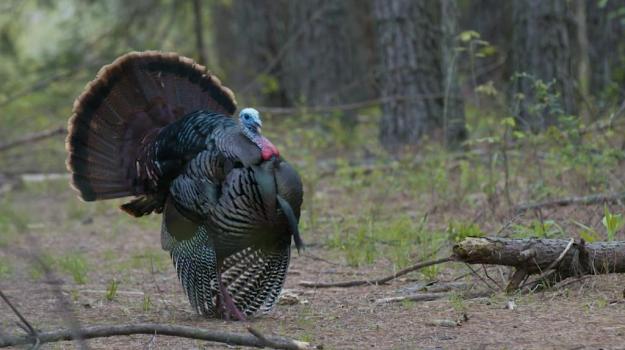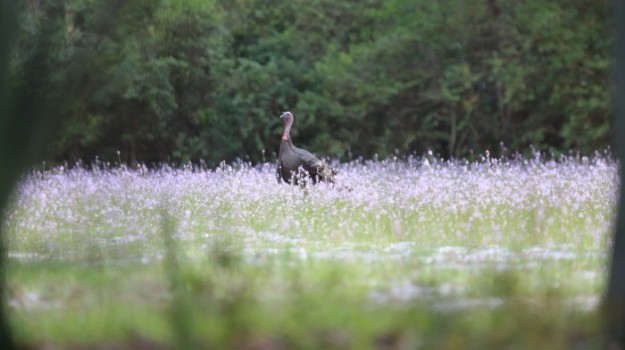
Why are the gobblers always on your neighbor’s property and not yours? The answer to that could be a number of reasons. You must look at what a turkey needs and on the other hand, things a turkey doesn’t like, the solution may be easier than you think. Just like all wild critters, they need food, water, cover and space. What don’t they like? Pressure!
- Bugging habitat – Grasshoppers and other invertebrates make up 80% of a young poults diet. Mowed open areas or oftentimes your whitetail food plots create excellent bugging habitat.
- Water – Every living thing needs water to survive and a reliable water source is key to keeping wild turkeys on your property. Water sources in open areas are preferred. Water surrounded by thick vegetation is often used as an ambush point for predators.
- Grit –This is something many managers are missing, but don’t realize it. Wild turkeys prefer a variety of grit throughout the year. Grit consumed ranges from sharp sand to pea-sized pebbles and is relative to their diet throughout the year. An old stream bed, a gravel county road or a wash-out on a ridge side can all be great grit sources for your birds. They need these small pebbles to grind down food so that it is more easily digested. If you don’t have this habitat feature, simply bringing in a load of gravel and putting it out in several locations should suffice.
- Reliable Food Sources – Cultivated food sources like Clover & chufa are favored by wild turkeys and will keep them close. Burned areas create natural food sources that will help sustain wild turkey populations.
- Cover – Turkeys need mixed cover throughout their habitat for nesting and evading predators. Typically the same type of edge cover that whitetails love will be adequate. Native warm season grass areas are also desired nesting habitat. Wild turkey numbers will fall if you are lacking cover.
The above five habitat features are relatively easy to make or install on your property. One major problem could simply be you are lacking roost trees. This feature is obviously a bit more difficult to solve. Food, water and cover can all be added to a property relatively quickly, but roost trees will take years to come about. More information can be found at the NWTF.
This tip is courtesy of the GameKeepers Field Notes, a weekly wildlife and land management email newsletter produced by the Mossy Oak GameKeepers.
A GameKeeper by definition is someone who truly loves AND lives the land, the critters and nature…not just during hunting season but all the time. A GameKeeper wants to be outdoors every day and work the dirt while living their personal “obsession”.
Find out more about what makes a GameKeeper by visiting our website.





























